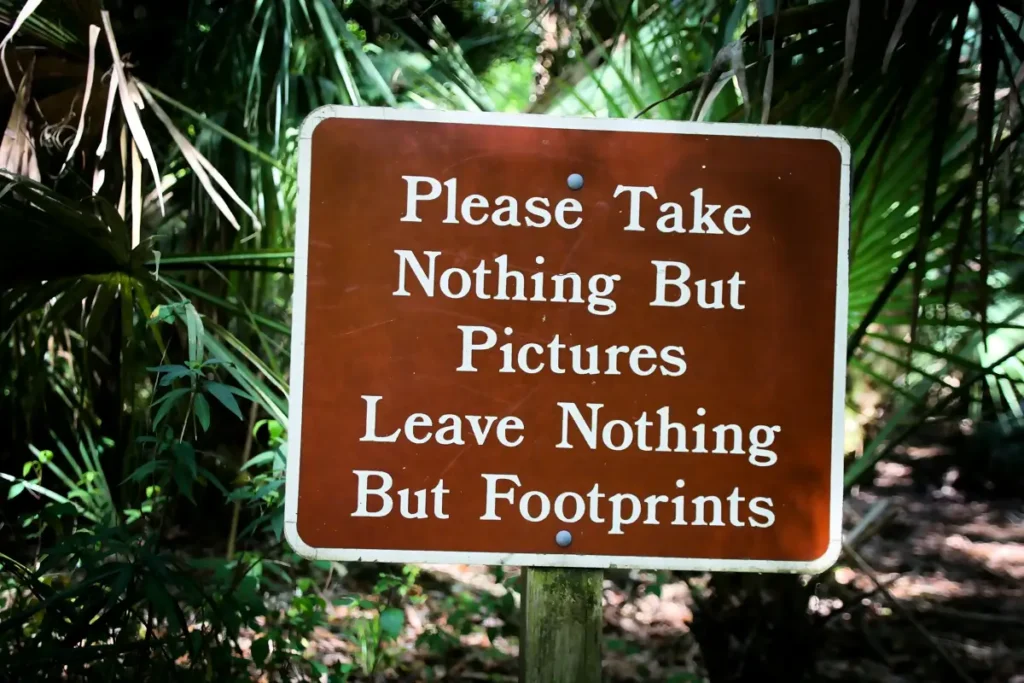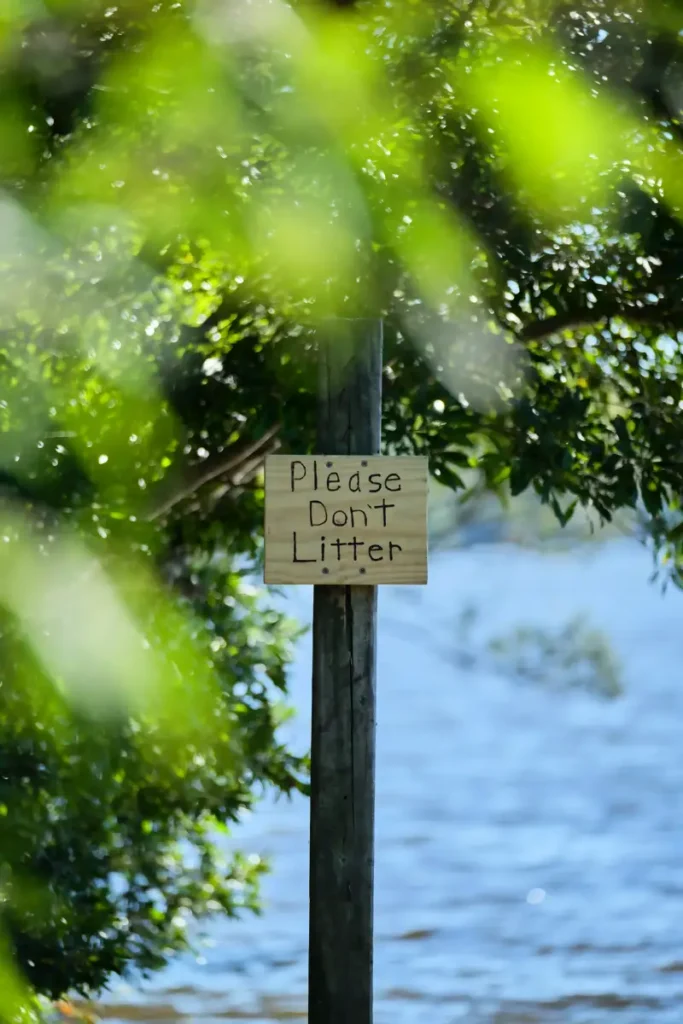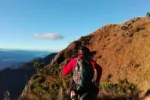The 7 “Leave No Trace” Principles
This post may contain affiliate links. This means that we may receive a small commission from purchases through those links. Read more in our affiliate disclosure.
We do not inherit the earth from our ancestors; we borrow it from our children. Let’s return it unspoiled.
The Leave No Trace principles are essential for minimizing our impact on nature. Key practices include planning ahead by knowing regulations and weather conditions, traveling on durable surfaces to prevent damage, disposing of waste properly, and leaving what you find to preserve natural areas. Additionally, minimizing campfire impacts, respecting wildlife, and being considerate of other visitors ensures a safe and enjoyable experience for all. Practical tips emphasize managing water sources, campsite management, and the importance of effective group camping. Follow these guidelines to enjoy adventures while keeping nature pristine.

Leave No Trace Principles and Practices
The Leave No Trace Principles aim to minimize our impact on nature. They are about using common sense and treating the outdoors, its inhabitants, and us visitors with equal care.
What is Leave No Trace?
“Leave No Trace” is a national educational program informing visitors on reducing damage during outdoor activities, mostly non-motorized. It’s the Rosetta Stone for happy hiking.
Visit Leave No Trace to learn more.
How Did Leave No Trace Develop?
“Leave No Trace” dates back to the U.S. Forest Service in the mid-20th century. They launched a movement focused on “minimum impact” practices, leading to the creation of the Leave No Trace Center for Outdoor Ethics. Organizations like the National Park Service, Boy Scouts of America, and Sierra Club adopted these wilderness ethics, fostering a community of thoughtful adventurers.
Leave No Trace principles were officially recognized in 1999 as essential guidelines for everyone enjoying the outdoors.

The Seven Principles
Plan Ahead and Prepare
Planning is key. Know the regulations, concerns, and areas you’ll visit. Here are top tips:
- Study the rules and potential issues of your destination.
- Pack for extreme weather, hazards, and emergencies.
- Schedule trips during less busy times.
- Keep groups manageable; smaller is better.
- Repackage food to reduce waste.
- Use maps and GPS instead of marking trails.
- Know sunrise and sunset hours to avoid being caught in the dark. Check the sunrise and sunset calculator.
Travel and Camp on Durable Surfaces
Durable surfaces are less likely to be damaged by our presence. Here’s how you can minimize impact:
- Use maintained trails, campsites, and solid surfaces like rocks, gravel, sand, or snow.
- Camp at least 200 feet from water sources.
- Stick to existing trails and campsites in high-traffic areas.
- In pristine areas, spread out to avoid creating new trails.
- Avoid fragile ecosystems by sticking to resilient surfaces.
Dispose of Waste Properly
Improper waste disposal can ruin a trail. Here’s how to pack it all out:
- Carry out all trash, leftover scraps, and litter.
- Use toilet facilities or dig cat holes (6-8 inches deep, 200 feet away from water) for human waste.
- Pack out toilet paper and hygiene products—burying isn’t enough.
- Wash 200 feet away from water sources and scatter dishwater to disperse quickly.
Leave What You Find
Protect what you find for others to enjoy:
- Observe cultural and historic structures without disturbing them.
- Leave rocks, plants, and natural objects as they are.
- Avoid introducing non-native species.
- Don’t build structures or dig trenches.
Minimize Campfire Impacts
Campfires can harm if not managed properly. Keep the woods safe:
- Use lightweight stoves and candle lanterns.
- When fires are necessary, use established fire rings or fire pans.
- Keep fires small and use dead wood found on the ground.
- Burn wood to ash, ensure campfires are extinguished, and scatter cool ashes.
Respect Wildlife
Respect wildlife for their wellbeing and yours:
- Watch from afar—don’t follow or approach wildlife.
- Never feed animals; human food harms them.
- Store food and trash securely to deter critters.
- Keep pets in check or leave them home on hikes.
- Avoid wildlife during sensitive times like mating or nesting.
Be Considerate of Other Visitors
Everyone deserves nature’s serenity:
- Yield on trails and keep noise levels down.
- Step aside for pack stock on trails.
- Camp away from trails and other campers.
- Enjoy quiet moments and let nature’s sounds prevail.
Keep these principles close, and we’ll help wilderness spaces thrive for generations. Ready to blaze those paths rightly? 🚶♀️✨

Practical Hiking and Camping Tips
While the “Leave No Trace” principles lay the groundwork for ethical adventuring, practical hiking and camping hacks make a difference out there. Here are some tips to help you in various environments.
Tips for Undisturbed and Arid Areas
Pristine areas are delicate. Here’s how to tread lightly:
- Only visit pristine places if skilled in Leave No Trace techniques.
- Spread out tents and avoid repetitive traffic. Move camps every night.
- Choose durable sites for tents and kitchen areas.
- Use soft shoes around the campsite to lessen impact.
- Select resilient routes between camp parts to prevent creating new trails.
- Disperse use to prevent campsites and trails from forming.
How to Manage Water Sources
Managing water sources wisely is crucial:
- Carry full water containers back to camp to limit trips.
- Camp at least 200 feet from water sources.
- Wash 200 feet away from water using biodegradable soap.
- Scatter dishwater 200 feet away after straining food particles.
Tips for Campsite Management
Keep your campsite low-impact and practically invisible:
- Use rock slabs for kitchens to minimize ground impact.
- Cover scuffed areas with natural materials and brush out footprints.
- Hide campsite indications to prevent future visitors from using the same spot.
How to Handle Group Camping
Group camping can be enjoyable if everyone follows Leave No Trace:
- Group leaders should be proficient in Leave No Trace practices.
- Split large groups into smaller teams to reduce environmental pressure.
- Leave shelters for solo hikers and smaller groups in greater need.
- Scan campsites thoroughly before leaving to ensure no traces remain.
With these tips, you can enjoy your adventures while keeping nature pristine. Lace up, hit the trail, and wander wisely—because the wild world awaits! 🥾🌲🌌




